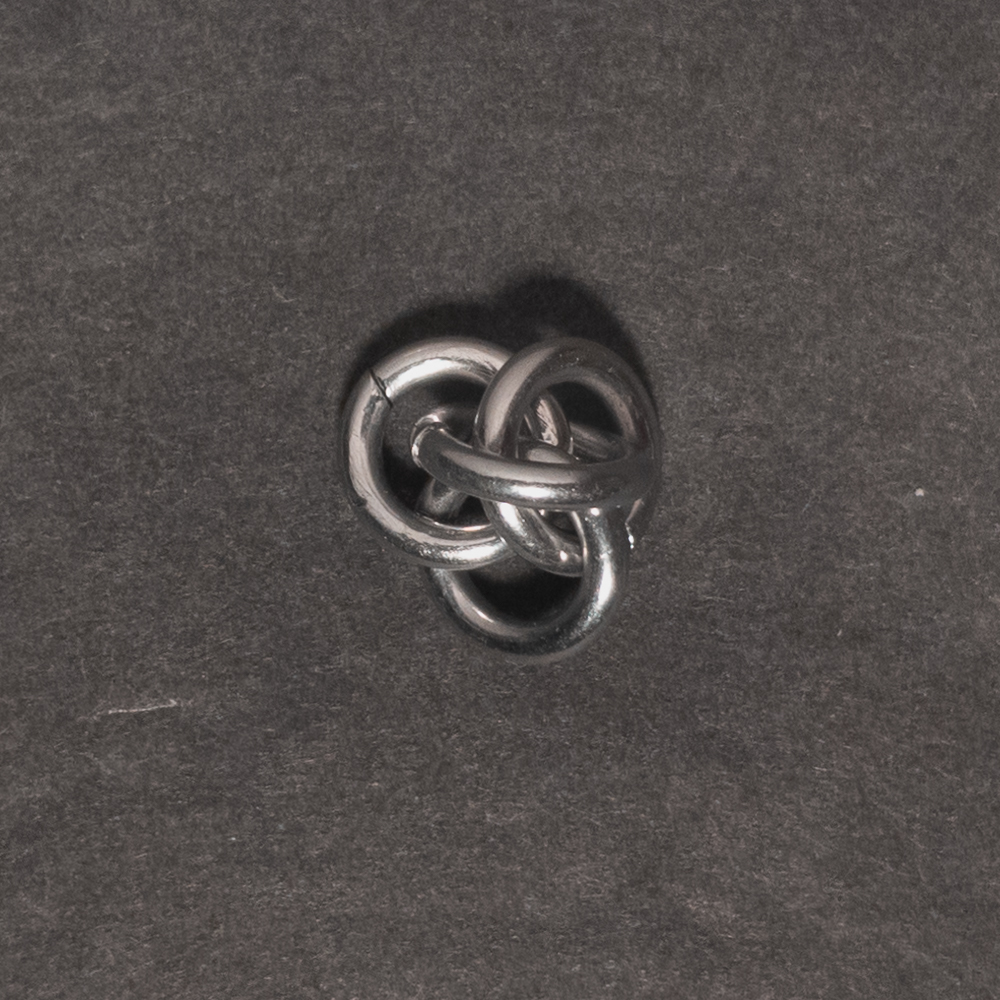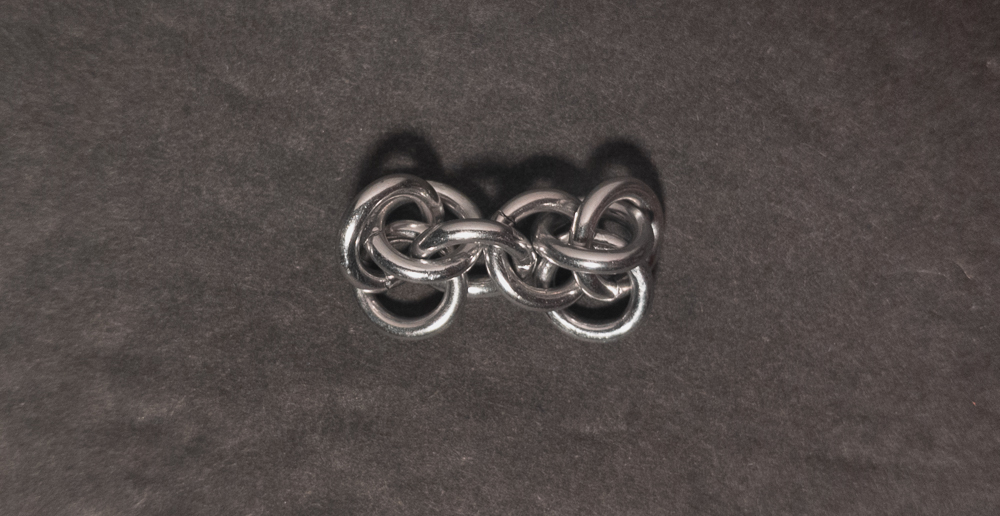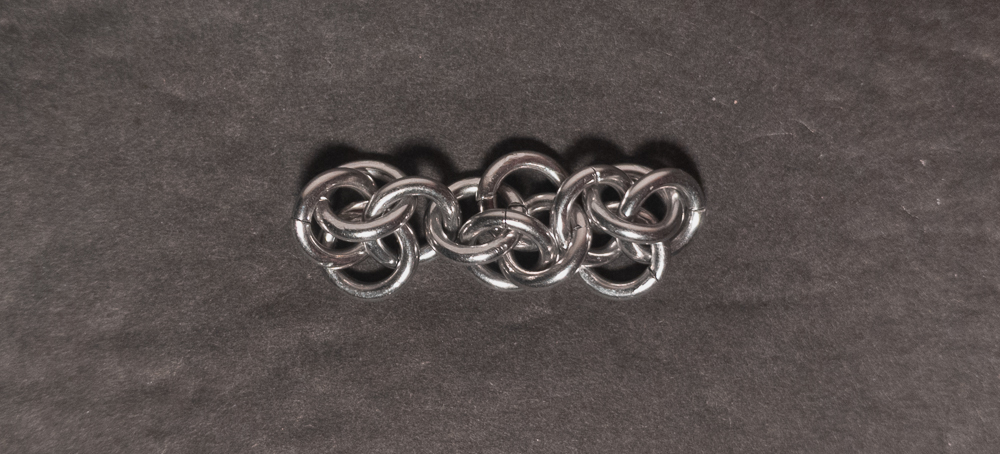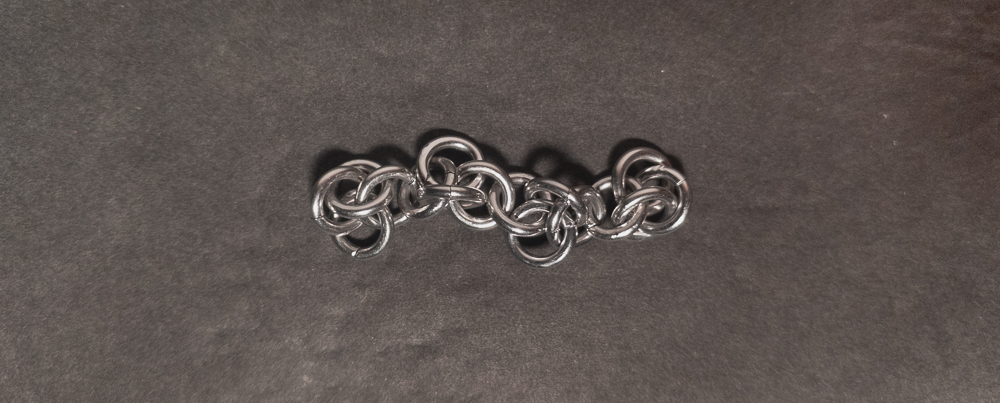Charmed
Overview
While looking for new weaves to try, I found Charmed on M.A.I.L. by Corvus. This variation of Charm Linkage is a member of the European and Rhino families created during an attempt to make Charm Linkage. I was unable to find any tutorials for the weave online, so I created and included this one.
Materials
For the sample piece showcased in this post, I made the rings myself. I used 16 SWG Bright Aluminum wire from The Ring Lord coiled around a 5mm mandrel (for an approximate ID of 5mm) for an AR of 3.1.
Tutorial
-
Start with a 3-unit-long 2-in-1 Chain.
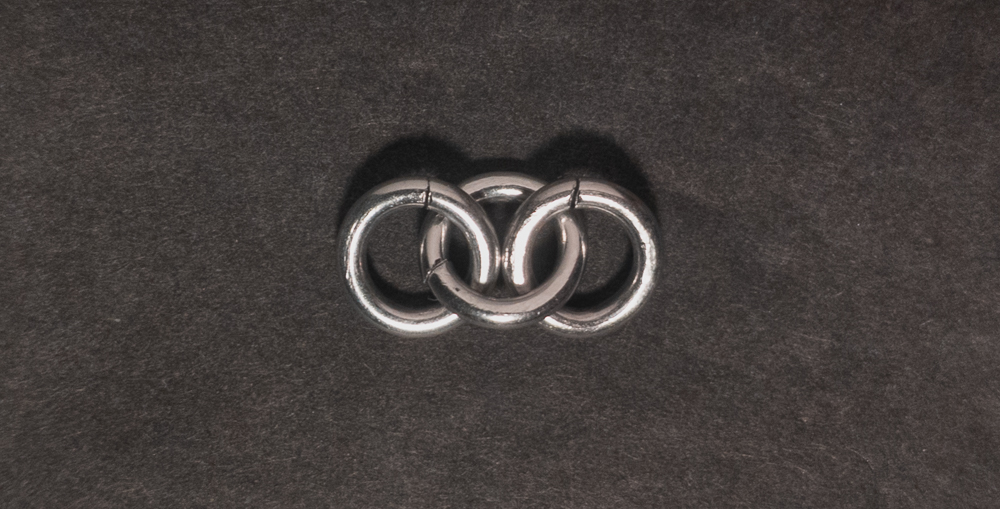
-
Fold the chain so the outermost rings (red in the image below) lie on top of each other and form an eye with the middle ring (blue in the image below) going through it.
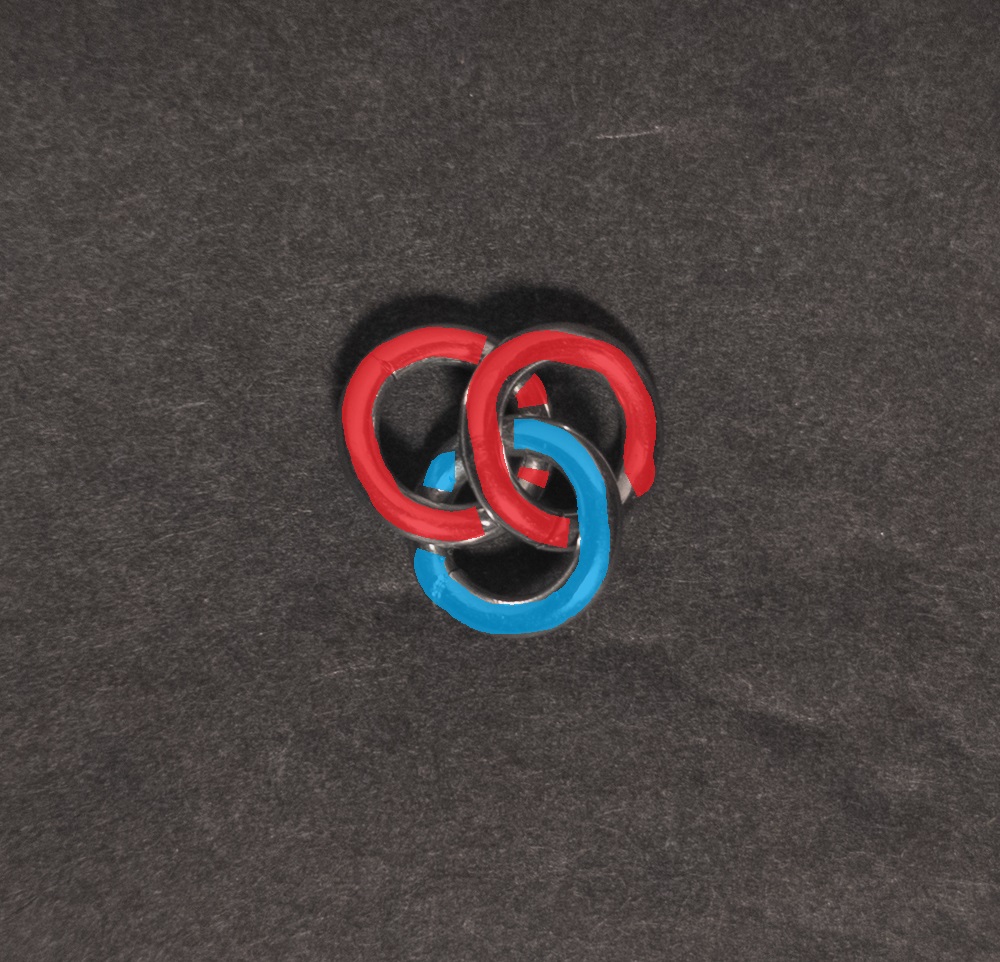
-
Add 1 new ring (green in the image below) around that eye (formed by the rings in red in the image below).
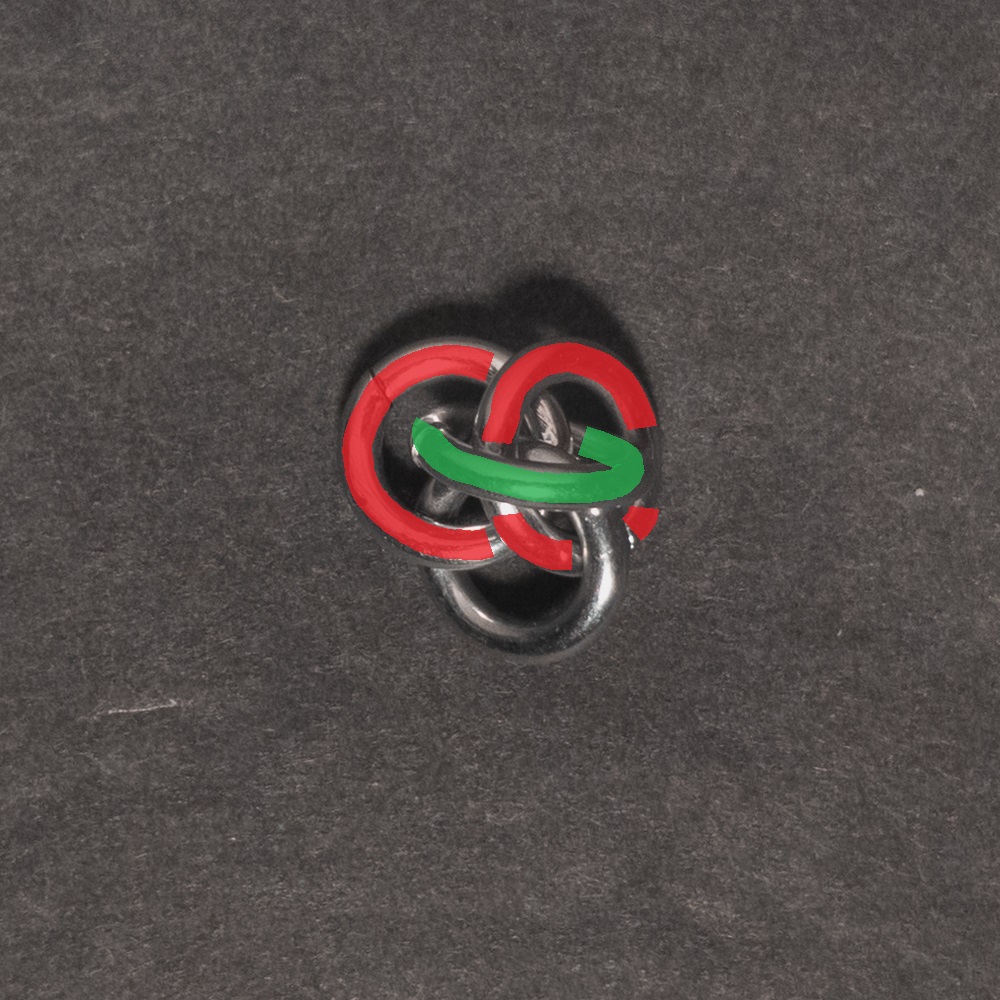
-
Add a 3-unit-long 2-in-1 Chain of new rings (green in the image below) to the end of the charmed unit (red in the image below).
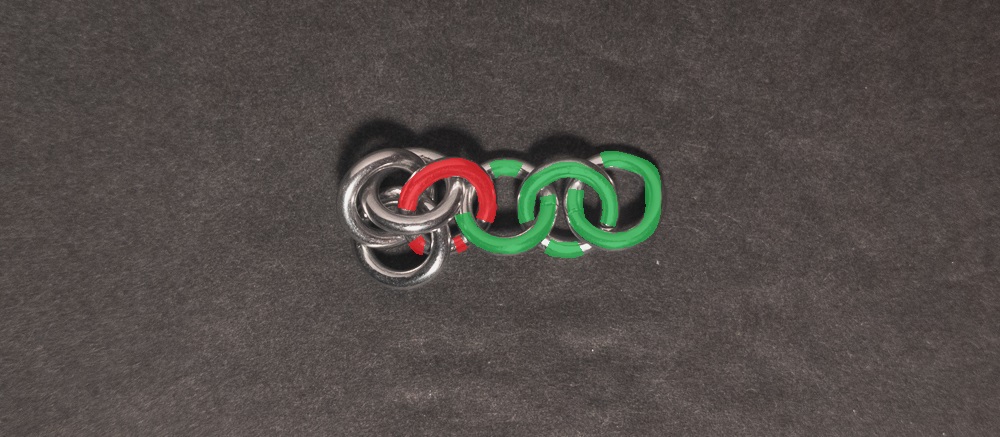
-
Fold these new rings so the outermost two (red in the image below) lay on top of each other and form an eye with the middle ring(blue in the image below) going through it.
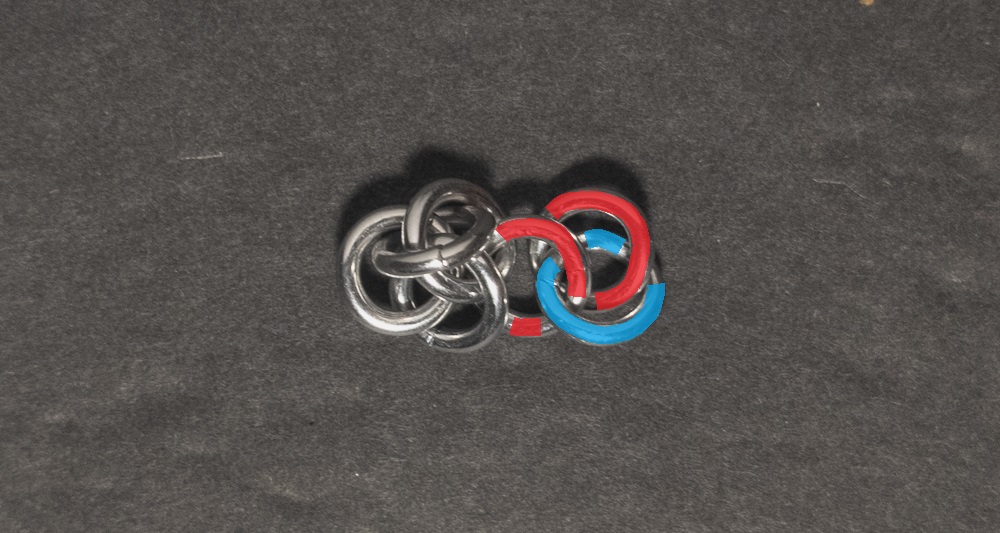
-
Add 1 new ring (green in the image below) around that eye (formed by the rings in red in the image below).
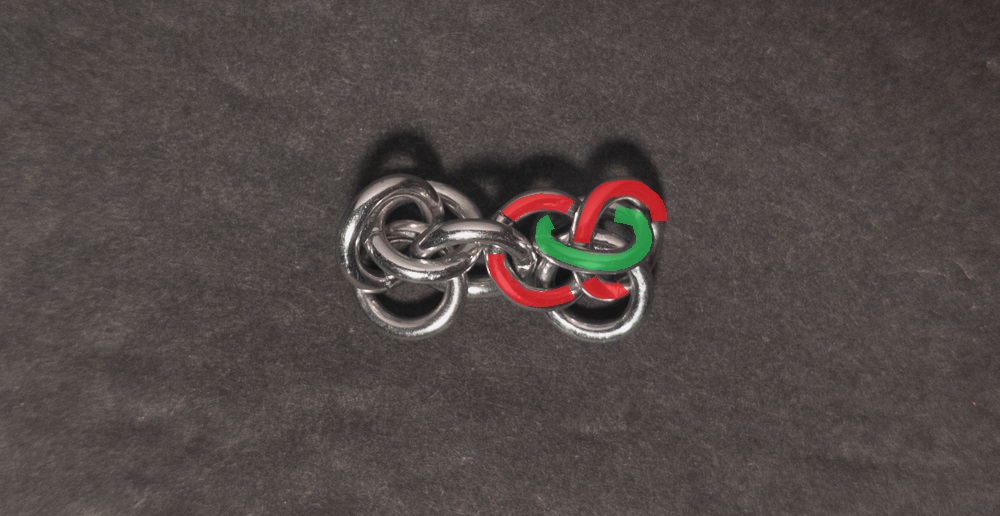
-
Repeat steps 4-6 until you are happy with the length of the chain.
Notes
Charmed is a weave that is quite simple to understand but can be a bit tricky to make, particularly when trying to maintain a consistent spiral. It looks good when under tension, but can appear messy when laid flat if the spiral isn’t clearly defined. As a chain weave with a somewhat round cross-section, it works well in bracelets and necklaces, though it shines most in uses like dangling earrings or hanging decorations, where gravity enhances its appearance. It’s not ideal for chokers due to its slightly spiky nature. Being built from Charm Linkage units, it also allows charms to be easily attached. If you plan to make this weave, keep an eye on the end units, as their orientation isn’t fixed and can easily change. Paying close attention to these orientations is essential; using a twist tie, an extra ring, a larger ring, or a differently coloured ring to mark the first ring helps. Holding the weave by the top ring also makes the spiral pattern much clearer. Given the requirements to showcase its aesthetic appeal, I recommend this weave only if you have a project in mind or find its appearance appealing.
Pictures
Flat

Flat: Angled
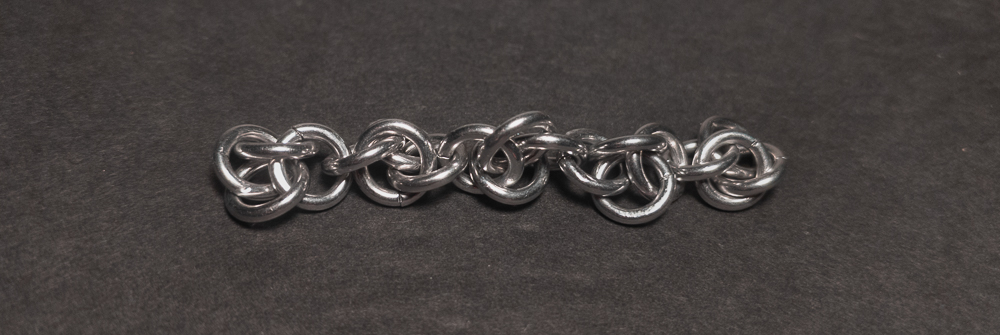
Flat: Profile

Vertical
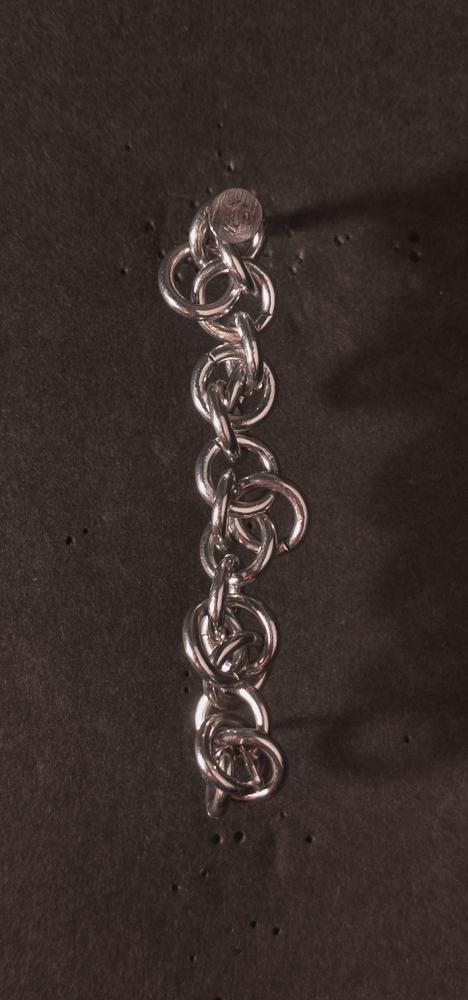
Vertical: Profile

In Process
